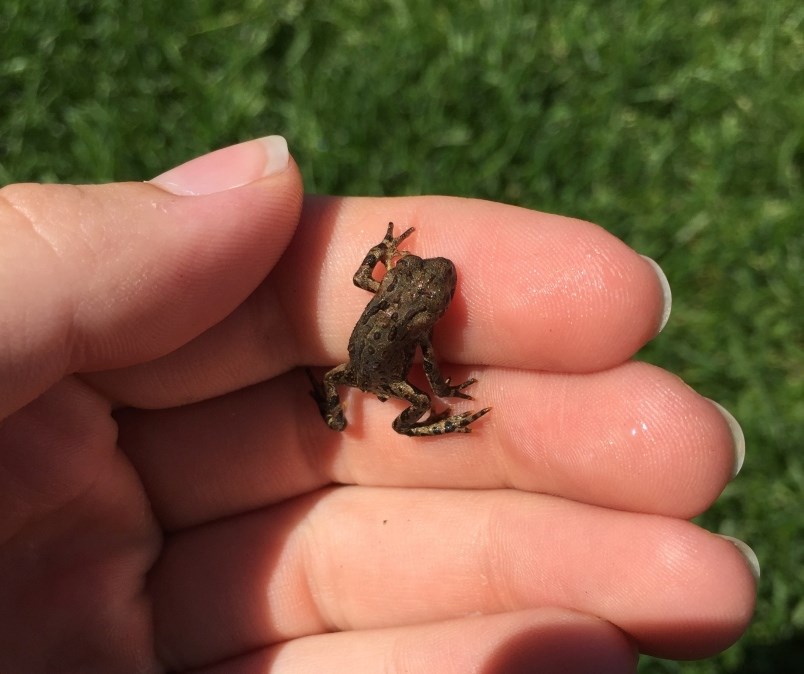A close eye on Alice Lake Provincial Park would reveal what researchers and volunteers have been looking for since April — thousands of tadpoles.
At Fawn Lake and Edith Lake, the dedicated team has been looking for tadpoles to track the species’ breeding pattern in the area, but so far, they’ve only been recorded at Fawn Lake. In their weekly data collection trips, no tadpoles have been found at Edith Lake, despite the group seeing egg masses there this spring.
While the migration pattern of the western toads is known other areas of B.C., like in Whistler, triggering closures and awareness signs for recreationalists to share lakeside trails with the small amphibians, not much is known about the Squamish population. On foot and by kayak, the new project hopes to be able to get to the bottom of their questions to help BC Parks figure out mitigation measures.
Rachel Shephard, the project coordinator for the Squamish Environment Society’s western toad monitoring study, gave BC Parks (one of the project’s collaborators) an update of what they’ve learned so far this summer. In a press release, she said anecdotally the population numbers have been in decline, but there is no hard data yet.
In the coming weeks, though, another opportunity ripe for data collection presents itself: the great toad migration.
“When you have a really big migration, you can have a carpet of toads and it’s almost impossible to find a spot to step and avoid them,” Joanna Hirner, BC Parks conversation specialist, said in a press release. “One of the things we are trying to do with the Alice Lake project is identify certain corridors that are the most important for the toadlets so we can maybe look at doing a toad tunnel under the trail.”
The migration typically lasts a week.
“We’ve been preparing for this since April and it’s starting to happen now, so it’s pretty exciting,” Shephard said in a press release. “There’s very little known about these particular breeding populations, so we want to try and learn a bit more and see what we can do to help. The enthusiasm and dedication of the volunteers is fantastic.”
Find out more at www.squamishenvironment.ca.
*We have clarified this story to saw the decline of the toad population is anecdotal, and not data-driven.



